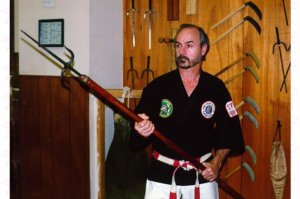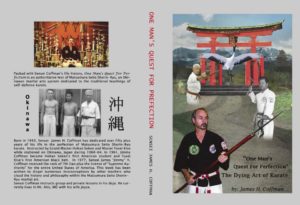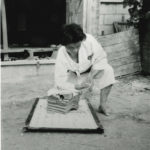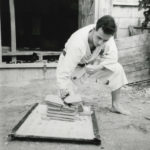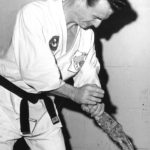I believe this is true for all of us who had the good fortune to train with Sensei Hohan Soken. I was one of those lucky ones, having been trained between 1961 and 1964. Just meeting such a great karate master made each of us a better person. With over 54+ years in the Art of Karate, it’s almost impossible for me to put down in words its impact on me.
Before I went into the military at the age of seventeen, I was on a fast track headed for jail, but by luck I was sent to Okinawa. Not only was I blessed with being sent there at a time before karate became commercial, but I was also blessed by having great karate instructors. And it’s those teachers, “the old” – Fusei Kise and Hohan Soken – who I will honor and respect forever, because they made me what I am today. Indeed, all of the great karate teachers who came before me are men to be respected and honored; they are the true ground breakers for karate being here in the United States.
Karate has made me a person, who is honest, trustworthy and loyal. It has given me the ability to defend myself, my family and my friends; to be able to succeed in business; to be able to hold my head up with respect and not be afraid to confront those I feel have done wrong; to be able to pass on to others the art of karate itself. Karate does wonders for the young, and gives them something that cannot come from sports. They are trained to defend themselves, to perform kata in front of others, and to function as part of a group. They learn to concentrate, focus, and to respect and honor, not just themselves, but their seniors and parents. Karate gives them a foundation on which they can grow to become productive men and women who can become a part of society at its best.
I believe that all styles of karate are good; there are only bad instructors. Training in karate is like purchasing an automobile, if all you want is basic transportation or exercise, than you can go to whatever school is most convenient or cheapest. If you are looking to learn how to break broads or perform high kicks, you should pick a Korean style. If you are looking for flashy uniforms, then pick a Chinese style such as Kung Fu. They each have their merits. But if you want a system that is geared to street self-defense, then you have to be much more selective, pick one of the Okinawan styles.
Unfortunately, the art of karate that I learned has changed for the worse, each and every decade from 1960 on. When I first started training, now, some 54+ plus years later, we are losing the true Art. We are losing the old ways in which karate was taught. It has gone from a true fighting art to that of a sport, or even worse. I myself have had to learn to teach classes much easier, just to retain students – and my classes are still intense and demanding. In truth there are very few people today that are willing to go through the true training of old. Students attended classes each and every day, not only were they very physical and demanding on the body, but they required a mental commitment to the art that we do not accept today. Each of us has good and bad traits, but rest assured, we all have egos in some form of the other. And it’s our egos that get people in trouble when they make claims that cannot be authenticated because Soken is no longer with us. There is no reason to point fingers; those of you know whom I am referring to.
Although we can say what we want about the good and the bad of those who have claimed to be Soken’sstudents, that does not diminish the impact he had on us. We might not agree with each other, but we can never take away what each of us received from Soken. I look upon all those who met him as lucky. Whether we like it or not, we are brothers with a common bond: Matsumura Seito, Shorin Ryu Karate.
To all of you who came before me, I say, “Thank you.” To those who came during or after me, I extend an olive branch. And for those who will carry on our traditions after us, I say “Be proud, and stay true to the old ways.” This is what I believe.
James H. Coffman
Shorinji Ryu 1960 – Present
Matsumura Seito 1961- Present
7th Dan-, Jikideshi
Hohan Soken’s first American student
